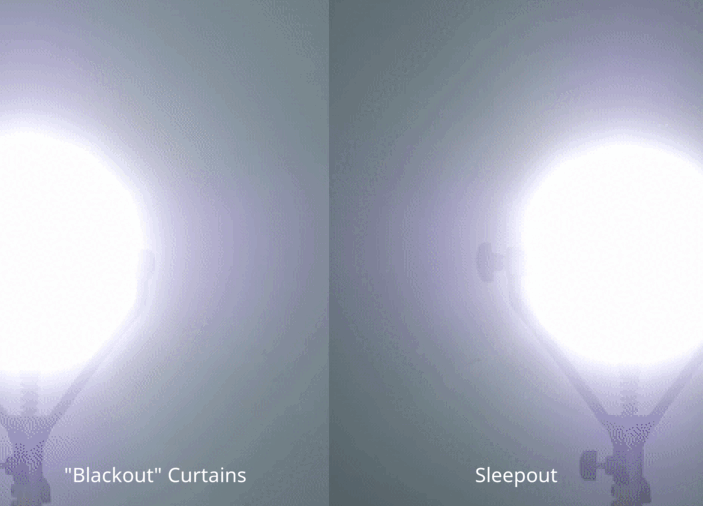Learn how to lay the foundation for healthy sleep habits that will benefit your child throughout their lives, all while keeping their individual needs in mind. Let's dive in and set you and your baby on the path to better sleep!
What Age to Start Sleep Training Your Baby
Deciding when to start sleep training your baby is a crucial decision that can greatly impact their sleep habits and overall well-being. While the ideal time may vary depending on your baby's development and individual needs, most experts suggest waiting until your baby is around 4-6 months old before implementing sleep training techniques. This age range is generally considered appropriate because your baby's sleep patterns are becoming more consistent, and they're typically capable of sleeping for longer stretches without needing to feed.
Indicators That Your Baby is Ready for Sleep Training
-
Established Circadian Rhythm: Babies start developing a more predictable sleep-wake cycle at around 3-4 months of age. If you start noticing patterns in your baby's sleep times, it could be an indication they're ready for sleep training.
-
Consistent Sleep Patterns: Your baby sleeps for longer periods, usually about 4-5 hours at a time, and starts sleeping more at night than during the day.
-
Ability to Self-Soothe: A crucial milestone for sleep training is when your baby begins to self-soothe. Signs of self-soothing might include sucking their thumb, finding their pacifier, or cuddling a soft toy.
-
Decreased Night Feedings: If your baby can sleep for at least five hours straight without needing to feed, it might be a good time to consider sleep training.
-
Increased Awareness: Your baby shows more awareness of their surroundings and begins to understand basic cause-and-effect, which is crucial for methods that involve some form of conditioning.
-
Change in Sleep Needs: As your baby grows, they require less sleep during the day and more at night. If your baby's naps are becoming shorter and less frequent, it may be time to start sleep training.
-
Stability in Daily Life: Any big changes like a move, teething, or illness can disrupt your baby's sleep. If there have been no major disruptions or changes recently, it might be a good time to consider sleep training.
Tips for Mastering the Art of Putting Your Baby to Sleep
A lot goes into creating a comfortable sleep environment for your baby. Here are some factors to consider:
-
Maintain Room Temperature: Keep it between 68-72°F (20-22°C) for optimal comfort.
-
Choose Breathable, Lightweight Bedding: This will provide added comfort and temperature regulation.
-
Utilize White Noise Machines: Use these to create a soothing atmosphere and drown out disruptive noises.
-
Consider Calming Scents: Scents like lavender can further help in creating a soothing environment.
-
Use a Humidifier: Especially during dry seasons, this will maintain optimal humidity levels, keep your baby's nasal passages clear, and reduce congestion.
-
Introduce a Safe, Age-Appropriate Stuffed Animal: This can provide added comfort and security during sleep (usually safe around 12 months or older, but always consult your pediatrician).
-
Continually Assess and Adjust Sleep Environment: As your baby grows, their needs and preferences may change, so it's important to continually assess and make adjustments.
-
Invest in High-Quality Blackout Curtains: Block out light for a peaceful, dark environment and help maintain a consistent room temperature.
Navigating Your Baby's Sleep Changes: What to Look Out For
-
Understanding the Moro Reflex: Babies often sleep with their arms up due to the Moro reflex, also known as the startle reflex. It's a normal developmental milestone that occurs when a baby feels a sudden change in their environment. This reflex typically fades around 4-6 months as the baby's nervous system matures.
-
Positional Experimentation: As your baby grows and their motor skills develop, they may begin to experiment with various sleep positions. Be aware of these changes and ensure the sleep environment remains safe.
-
Identifying Discomfort through Posture: Your baby's sleep posture can provide valuable insights into their comfort level. For instance, frequent kicking off of the blanket might indicate being too warm, while curling up tightly could mean feeling cold.
-
Adapting to Your Baby's Changing Needs: As your baby hits different developmental milestones, their sleep habits and preferences will change. Monitoring these changes can help you adjust the sleep environment to better suit their needs.
-
Contributing to Restful Sleep: Understanding and adapting to your baby's sleep positions and gestures will promote a more restful sleep experience for both you and your baby.
Happy Sleeping for You and Your Little One.
Understanding and supporting your baby's sleep needs is essential for their overall health and well-being. By mastering the art of putting your baby to sleep, creating a comfortable and safe sleep environment, and employing age-appropriate sleep training techniques, you can help your little one establish healthy sleep patterns that will last a lifetime. To help your baby sleep through the night, consider adding the most recommended blackout curtain by sleep specialists in North America! Use code WELCOME10 for $10 off, and embark on the path toward better sleep for you and your little one.







